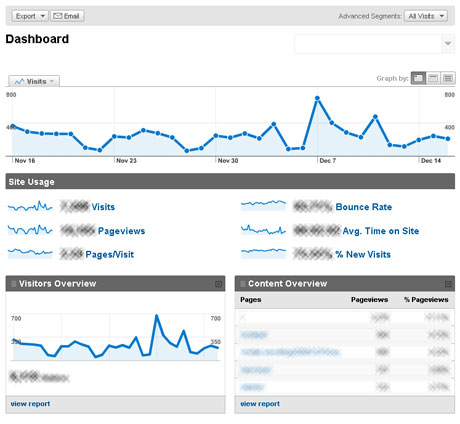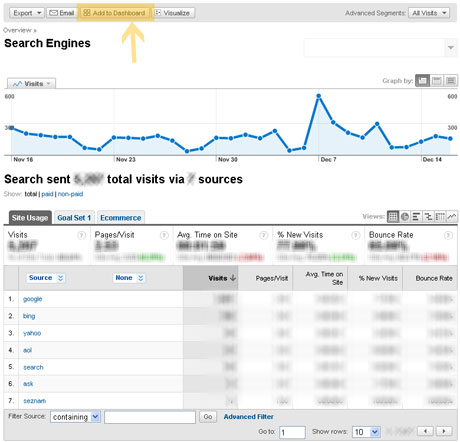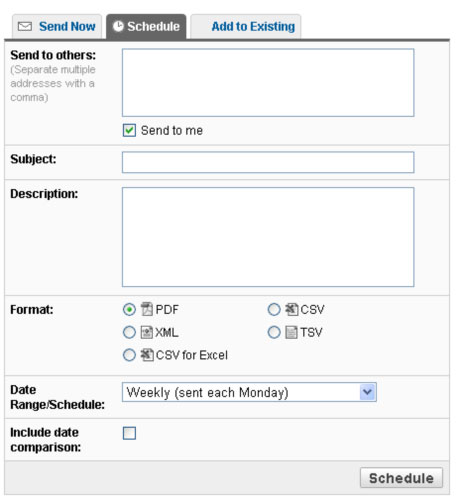
After the technical detail of the last few posts, I’m quite relieved to tackle a couple of more straightforward topics – dashboards and automatic reporting.
The tips coming up in today’s blog will help speed up basic reporting within Google Analytics, saving you time and – as a result – money.
Dashboards
Let’s take a look at your dashboard. This is the first page you see when you log in to view your Google Analytics reports, and it looks like this:

The dashboard is designed to let you see at a glance what’s been happening. The site usage statistics provide an overview of activity for the selected time period (by default, this is a month). The smaller tables underneath can be customised to suit your needs.
If you click on the dark grey title bar of any table, you can drag it around and put it in the place that suits you best (this is most helpful if you need to prioritise your reports). If you don’t want to see a particular report on your dashboard, you can click on the cross in the grey title bar, and it will disappear. (Don’t worry if you do this by accident, you can always add the report again).
Adding reports to your dashboard.
If there’s a particular report that you want to view regularly, then the best thing to do is add it to your dashboard. That way, you have the report overview in front of you from the moment you log in, and you’ll also have a direct link to the full report – this can save you many clicks.
Adding a report is very simple. Navigate to the report you want to add to your dashboard, and then click the ‘Add to Dashboard’ button, highlighted in the screenshot below.

Job done!
Automatic reports
If, like me, you need to check certain stats in certain profiles every day, then you can save yourself the hassle of logging into Analytics by setting up a scheduled report. In this way the report will appear in your inbox as often as you need it.
To set up an automatic report, navigate to the relevant screen and hit the ‘Email’ button, as below.

You’ll be taken to an Email Reports set-up page. Hit the schedule tab at the top and fill out the details. If you’re logged in under your own account, then the correct email address will already be set. If not, you can add your email address in the ‘send to others’ box.

The other options are self explanatory. Choose the date range, and how often you want to receive the report. Then state whether you want the report to include comparison data, and hit ‘Schedule’.
Automatic reports can save lots of time, so it’s well worth thinking about who needs to see reports regularly, and what information they need to see. If you set reports up and let Google Analytics do the work, you’ll be able to increase productivity significantly – both for you and for others.

.jpg)